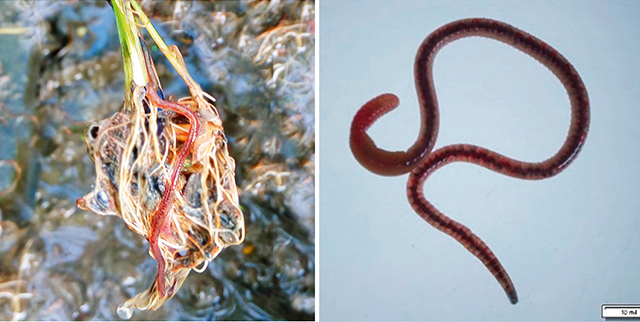
Earthworms are more than just inhabitants of the ground. In rice fields, their abundance and behavior can tell if a soil is healthy or polluted.
A recent PhilRice study showed that the response of a certain species of earthworm can reveal possible chemical contamination of irrigated rice areas due to excessive and continued butachlor herbicide application. Butachlor is an active ingredient of herbicides, commonly used by farmers to control weeds of both transplanted and direct-seeded rice.
Researchers Jehru Magahud, Sheena Lourdes Dalumpines, Nonillion Aspe, and Christopher Cabusora analyzed the growth and development of Sparganophilus sp. earthworm in increased concentration of the said chemical.
Commonly inhabiting stream banks and rice paddies, specimens used were collected from an abandoned rice field and from piles of decomposing rice straw in Muñoz, Nueva Ecija.
According to Magahud, the death rate of mature and young earthworms increased after seven and 14 days of exposure to augmenting butachlor concentrations in the soil. He also said that the ability of immature earthworms to produce casts declined after being exposed to 758mg/kg butachlor in seven days. Worm casts are natural sources of nutrients and minerals for the soil.
Results also show that the development of clitellum, the ring-like part of the worm’s body used to store its eggs, decreased after the exposure to butachlor concentrations. It was also observed that the earthworms avoided the soils that have higher concentrations of the said chemical.
The team also found similar results from their study on copper in the soil.
“Earthworms have receptors that can quickly respond to chemical stimuli. From these results, we can say that their mortality, cast production, and avoidance response are potential indicators for assessing chemical contamination in soils,” Magahud said.
They also noted that conducting similar studies can be used as reference in developing standard guidelines that can later help in assessing risks brought about by soil contamination.
“It can be a better alternative to standard laboratory procedures because it is cost-effective, quick, and simple,” Magahud added.




